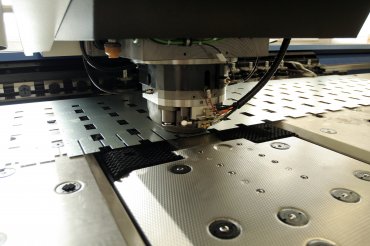
CHICAGO – The types of metals used in wide ranges of products have evolved in recent years, trending toward greater use of alloys and new kinds of alloys as manufacturers strive to make things that are stronger and lighter weight. According to an industry insider, this shifting landscape of machining creates challenges in the formulation of metalworking fluids.
Much of the evolution in metals choices has been spurred by efforts to improve fuel economy – both in on-road automobiles and in other types of equipment. If a manufacturer switches to a metal that is stronger – which can be measured in different ways, such as torsional rigidity and bending rigidity – then they often can use less of the metal, reducing mass and thereby allowing better fuel economy.
But there are also other reasons, DuBois Chemicals Research and Development Manager for Metalworking Fluids Rick Butler told the North American Industrial Lubricants Congress here Sept. 11. Shipbuilders and manufacturers of offshore equipment are increasingly cladding the steels they build with in order to protect against saltwater corrosion. In some applications improved strength is itself the motivating factor, such as the parts of an auto body that are key to crash safety.
The new metals are mostly alloys – combinations of multiple metals – many of them categories of steel such as advanced high-strength steels. The increase in strength can result from the introduction of different elements, by tweaking the proportions of elements that are already used or by altering the process of manufacturing the metal. By far the most popular choice in the auto industry are dual-phase steels, which have low to medium levels of carbon as well as manganese, chrome, molybdenum, vanadium, silicon and niobium. Introduced during the 1970s, dual-phase steels attain high strength through a carefully controlled cooling phase.
Other varieties that have grown in popularity are transformation induced plasticity steels, which are strong but also highly ductile and are highly demanded for naval and marine applications; martensite steels, which have low levels of carbon and gain excellent strength from a rapid cooling process that freezes iron in its austenite form; complex phase steels, which contain small amounts of martensite, austenite and pearlite and which are less susceptible to bending than dual phase steels; and boron steels, which are very hard.
In the auto industry, Butler said, use of light steels has allowed 25 percent reductions in the mass of passenger car bodies while improving torsional rigidity and bending rigidity by 80 and 52 percent, respectively – all without increasing costs.
The performance benefits may be obvious, but these new alloys also bring challenges during manufacturing processes. Higher-strength steels are more difficult to stamp and form. In punching processes, for example, this means that the tool must also be made of harder material – usually M2 steel or powdered metals.
“Today’s stampers could not blank and form AHSS if tool steels did not change with them,” Butler said.
Staying with the example of punching operations, he noted that greater forces are needed when harder workpieces and tools are used, and this causes greater stress and increased temperatures at the contact surfaces, both of which must be addressed by metalworking fluids.
Choosing the kinds of additives to use can be tricky, particularly for extreme pressure additives. “Formulators have several families of chemicals to employ, including metal soaps, complex polymeric esters, metal chlorides, metal phosphates and metal sulfides, all of which work by reacting chemically with metal surfaces under high loads. However, each family performs optimally at significantly different temperatures,” Butler said. Metal soaps are at the low end, with an optimal range between zero and 500 degrees C, while metal sulfides have the highest at 600 to 1,000 degrees.
“The trick is figuring out which extreme pressure additives to use [for the] temperature range you’re operating at, which you really can’t measure correctly,” Butler said. To further complicate matters, some chemicals are not compatible with some types of metals. Sulfides cause copper to corrode and will stain ferrous metals.
Shipbuilders using aluminum to clad the insides of vessels must carefully pick their corrosion inhibitors depending on the alkanolamine present in the additive package. Monoethanolamine and monoisopropanolamine corrode aluminum more than diethanolamine, diisopropanolamine, triethanolamine and triisopropanolamine. To machine aluminum alloys, using fluids with high levels of fats or vegetable oils is important. Chlorinated paraffins help but arent necessary, he said, and can be replaced with polyol esters and polymerized esters. Stay away from active sulfur, Butler said.
Magnesium alloy has a high machinability rating and doesnt require much lubrication, he noted, but speical care is needed because magnesium is highly flammable and creates fires that are fueled by water. Formulators should at least use high-flash mineral oils, though higher-flash triglycerides or fats are better. Water-based coolants shouldn’t be used, of course.
Titanium is increasingly popular with manufacturers of metal products. High-water content coolants are needed for titanium machining, as well as high-flash, high-viscosity oils. Fat and triglycerides are again useful for these applications due to their high flash points, Butler said.